| Content:
|
Spiraea Vangutta is an ideal ornamental plant that looks great on city streets, in parks, in gardens and next to private buildings. This article will introduce readers to the characteristics and varieties of spirea Vangutta, provide complete information about the planting process and care rules, talk about methods of propagation and the use of the crop in landscape design.
|
Many gardeners are already growing spirea Vangutta, as it does not require much time to grow and care for and significantly transforms areas with its unique beauty. |
Description of spirea Vangutta and brief agricultural technology
Spiraea Vangutta is a deciduous hybrid from the Rosaceae family, which was bred as a result of breeding work in the mid-19th century. The ornamental crop is characterized by abundant and long flowering, high winter hardiness, rapid growth and durability.
Briefly about planting and caring for Wangutta spirea |
|
Description of spirea
Spiraea Vangutta is a deciduous shrub with arched curved branches and snow-white flowers that resembles a blooming waterfall, a white cloud or a large snowball. A huge number of fragrant inflorescences almost completely cover the foliage. The flowering period for early varieties begins at the end of May, for others - in June. In August, re-blooming is possible, but not so lush and abundant.
|
Spiraea Vangutta is often called “May snow” among the people. |
Thanks to its rapid growth (about twenty centimeters per year), an adult plant reaches two meters in height and the same in crown diameter. The leaves with a serrated edge, about three and a half centimeters long, are colored in two shades - dark green above and pale gray below. With the arrival of autumn, the leaf blades turn yellow and gradually fall off.
The lifespan of spirea is more than thirty years. After planting seedlings, Spiraea Vangutta blooms only in the third or fourth year. The sweet honey aroma of delicate flowers attracts a large number of bees to the site. The decorative crop is not afraid of severe frosts, it does not freeze in the climate of the Moscow region.
Varieties of spirea Wangutta
White bride
|
In the photo is spirea White Bride |
- The height and width of the crown reaches two meters.
- White racemose inflorescences are distinguished by great splendor and abundance.
- It blooms for about twenty to twenty-five days, from mid-June.
- Grows in light, nutritious soils with good drainage. Loves well-lit areas.
- Does not tolerate proximity to trees, the crown of which creates unnecessary shading.
- Overwinters without shelter at forty degrees below zero.The root part is mulched for the winter.
Gold Fountain

Spiraea Gold Fountain |
- The height of an adult bush is about one hundred and twenty centimeters, the diameter of the crown is up to one hundred and fifty centimeters.
- The inflorescences are white, hemispherical, with a bright honey aroma. The leaves are reddish in spring and deep yellow in summer.
- Differs in slow growth.
- Prefers to grow in full sun. In the shade, the golden foliage turns green.
- Grows on any type of soil.
- Frost resistance is high.
- Used in group and solo plantings, as a hedge.
Snow White
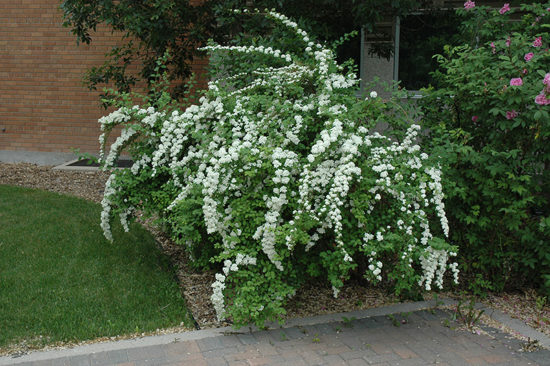
Snow White |
- With a bush height of one and a half meters, the width of the crown reaches one meter and eighty centimeters.
- Flowering begins in the spring and continues for four to five weeks.
- Prefers open areas with maximum sunlight throughout the day.
- Suitable for cities with heavy gas pollution. Grows well near highways.
- It has a high level of winter hardiness.
- Used for landscaping city streets, parks, alleys and various recreation areas.
Pink Ice
|
Spiraea Pink Ice |
- The height of the bush and crown diameter vary from one and a half to two meters.
- The flowering period begins in mid-May or early June, depending on the region.
- It is distinguished by soft pink inflorescences and original variegated leaves.
- Grows on alkaline or slightly acidic soils. Does not tolerate low-lying areas with stagnant moisture.
- Average level of frost resistance. Needs shelter in snowless winters, when the temperature drops below thirty degrees.
- It is used for landscaping any areas of private or public importance.
Renaissance
|
In the photo Renaissance (Renaissance) |
- The height is about one and a half meters, the crown diameter is up to two meters.
- It begins to bloom in the second ten days of April and continues until the beginning of June.
- The inflorescences are creamy-white, the foliage is bluish-green.
- It is characterized by rapid growth, high resistance to frost and most diseases.
- It shows its decorative effect in the open sun and does not tolerate shade.
- Used in single and group plantings.
How and where is it better to plant spirea Wangutta
It will be easy to grow spirea, and little time will be spent on care only if planted correctly. It is very important to take into account all the nuances and recommendations for choosing a site, preparing the soil and planting technology. Only in this case will the spirea show itself to be unpretentious and capricious.
When to plant
Spirea can be planted in spring and autumn. Saplings with an open root system are planted around September and early spring, and with closed roots - throughout the warm season.
Selecting a site for planting
The main requirements for choosing a landing site are an open and well-lit area with dry sandy soil. In such areas, spirea will bloom regularly and abundantly. Light partial shade is allowed for several hours a day. As for the soil, the unpretentious shrub is able to grow even in damp and depleted areas, but this negatively affects the lushness of flowering.
Attention! Lowlands with large amounts of melt or rainwater are not suitable for planting Vangutta spirea.
Soil preparation
If there is an area with rich black soil or loam, peat and coarse sand are added when digging.Increased soil acidity can be corrected with lime, dolomite flour or wood ash. Mineral fertilizers and organic matter are added to poor soil.
Don't forget to read:
Description of the best varieties of paniculata hydrangea with photos and names ⇒
Preparing the planting hole
The dimensions of the planting pit should be approximately twenty centimeters larger than the diameter of the root system. Depth - about fifty centimeters. In lowlands and damp places, a drainage layer about fifteen centimeters thick of broken red brick, pebbles or expanded clay is laid on the bottom.
The soil removed from the pit is mixed with dry sand, compost or rotted manure (one part each), turf soil and peat (two parts each). Fill the hole halfway with the prepared soil mixture and then begin planting the spirea seedling.
|
Planting spirea seedlings with a closed root system is possible throughout the warm season |
Preparation of seedlings
Before planting, dry, damaged and diseased roots on seedlings are pruned, and long and thin shoots are shortened. For three hours, planting material with an open root system is kept in water at a temperature of twenty to twenty-two degrees.
Plants are neighbors
Spiraea Vangutta tolerates any proximity calmly. It feels great and grows well next to conifers, annual flowers, and various decorative perennials. In each plant composition, the culture will feel harmonious and complete.
Planting process and scheme
- For planting, choose evening time or a cloudy day.
- The seedling is placed in the center of the hole, the roots are straightened, sprinkled with earth, and compacted a little
- The tree trunk surface is mulched with peat up to seven centimeters thick.
- After this, the plant is watered abundantly (two waters per bush).
Important! The root collar should remain at soil level after planting.
The interval between plantings depends on the purpose of cultivation. To create a hedge, the distance between seedlings is from forty to fifty centimeters.
Spiraea care
Watering rules
Spiraea Wangutta is a drought-resistant plant and does not like excess moisture. Watering adult shrubs should be done two to three times a month, pouring ten liters of water under each of them. The next watering will be required only when the top layer of soil becomes dry.
During hot and dry periods, especially with a long absence of rain, the frequency of watering increases. It is good to add sprinkling in the evening.
|
Spiraea Wangutta does not require special care, this shrub is very easy to grow |
When and what to feed
If the spirea was planted in prepared nutritious soil, then in subsequent years one feeding per year will be enough - in the spring. In poor areas, fertilizing will be required in the spring before flowering and in the fall before pruning.
Around April, the bushes are fed with complex mineral fertilizers. You can take special mixtures “Master”, “Sudarushka”, “Plantafol”.
In September - October (depending on the local climate) organic matter is used - an infusion of chicken manure or cow manure. Add a bucket of water to one liter of infusion, stir thoroughly and pour one liter under each young plant.
Soil care
Regular soil care consists of loosening the soil in the tree trunk after each watering and weeding out emerging weeds. To slow down the growth of weeds and preserve moisture, apply a mulching layer of straw or peat ten to twelve centimeters thick. Periodically, the mulch layer is updated or added.
Pruning spring-flowering spirea video:
Pruning spirea Vangutta
In the spring, immediately after the snow cover melts, sanitary pruning of spirea is carried out. Weak shoots are cut out inside the bush. They also rid the crop of damaged shoots, frozen tops and dry inflorescences from last year.
Important! Spiraea Vangutta is a spring-flowering spirea. Plants of this group bloom on last year's shoots, and if you heavily prune last year's shoots in the spring, you may not see flowering.
Pruning spirea after flowering
After flowering, it is recommended to cut off all faded peduncles of the Vangutta spirea; after such pruning, young shoots actively appear and make the bush more lush.
At the same time, you can start forming a bush. This annual procedure begins only in the third or fourth year of life, when the bush is already too thick and insufficient sunlight reaches the center of the bush.
For removal, select branches in the center (bottom) with many branches and minimal flowering, with few leaves. Branches at the very bottom of the bush that grow parallel to the soil should also be cut out or used as cuttings for propagation.
|
Spiraea bush pruning diagram |
Anti-aging pruning should be carried out after ten to twelve years. All shoots are cut to the level of the root collar.You can leave only five or seven branches from last year.
Reproduction
Seeds
The seed propagation method of spirea Vangutta is used only by professional flower growers, for experimental purposes or in breeding work. Ordinary flower lovers rarely use this method, because seed germination is only five to ten percent.
Cuttings
Two weeks after flowering has completed, you can begin harvesting cuttings. To do this, choose semi-lignified long shoots, without damage or signs of disease. The length of each cutting is from twelve to fifteen centimeters. Rooting of cuttings occurs in greenhouse conditions. The container is filled with a soil mixture consisting of equal parts of river sand and high peat. Each seedling is covered with a jar or plastic bottle with the top cut off.
An important condition for germination of cuttings is high humidity. Therefore, the soil must be moistened in a timely manner; it should not dry out. After several young leaves appear, the seedlings are transferred to individual planting containers. Young plants are transplanted onto an open plot of land only the next year.
Dividing the bush
This method is convenient to use when transplanting an adult bush to a new location. When digging it out of the ground, it is necessary to preserve the root part as much as possible without damaging it. The extracted plant is divided into several parts so that each has several shoots and developed roots. Planting should be done immediately, without allowing the roots to dry out.
By layering
The easiest way to propagate spirea is by layering. Its numerous branches located close to the ground allow this to be done without much hassle.In early spring, you need to select a semi-lignified shoot that easily bends to the soil surface and secure it in a prepared shallow groove. After securing with a wire staple and sprinkling with earth, only the tip of the branch should remain on the surface.
|
Reproduction of spirea by layering |
During the summer season, regular, abundant watering is necessary. In winter, the cuttings are mulched with a thick layer of peat or fallen leaves. In the spring, before the buds open, the cuttings are separated from the main bush and planted in a separate area.
Preparing for winter
Preparatory work begins with preventative pruning and inspection of plants for diseases and pests. If any are found, mandatory disinfection treatment with special means and preparations is necessary.
The next step is to apply autumn organic fertilizers in liquid form.
|
Spiraea Wangutta in autumn |
Spiraea Vangutta is highly frost-resistant, but in regions with frosts of thirty-five to forty degrees and below, and also in the absence of snow, it will need reliable shelter. The root zone is covered with a thick layer (at least fifteen centimeters) of dry leaves, sawdust, and peat. You can use spruce branches. In the first year after planting in the northern regions, young spirea bushes are also insulated from above - using film, spruce branches or dry leaves.
Spiraea Vangutta in landscape design
Landscape designers often use spirea to decorate plots and plant greenery in various areas. The plant has earned its popularity due to its high decorative qualities.A spherical flowering bush with charming white inflorescences cannot leave anyone indifferent. The universal culture is excellent in solo and group plantings, in simple and complex plant compositions. It goes well and gets along with other plants.
The use of spirea has no limits. She can:
Decorate an unsightly place in the garden
Cover a utility building, a dilapidated wall of a building, decorate a fence or low fence.
Looks great on a green lawn.
Combine with coniferous trees and shrubs, perennial flowering crops, stones and artificial decorations.
Can become a hedge.
To fully develop near a pool, fountain, or artificial pond.
- decorate the playground and recreation areas
- grow near gazebos, benches, swings, on city streets, near highways and various government institutions
- zone spaces and make accents
Diseases and pests
Spiraea Vangutta is almost never exposed to disease. The exception is improper care with excessive waterlogging. Under such conditions, fungal infections occur that affect leaves and shoots. At the first signs of disease, the affected parts are immediately removed, and the cut areas are covered with garden pitch.
Frequent pests of spirea are aphids and spider mites. To combat them, it is necessary to use the following drugs: “Akarin”, “Actellik”, “Neoron”, “Fufanon”.
Occasionally, the plant is affected by other uninvited guests. The most effective insecticides and immediate treatment will be required.For example, to destroy the blue sawfly - “Decis”, gall midges - “Karbofos”, “Calypso”, rose leafworm - “Fitoerm”, “Clonrin”.
Important! Each product must be used strictly according to the instructions.
With minimal but regular care, this unpretentious shrub will certainly reward you with abundant, fragrant and long-lasting flowering every year. Even a novice gardener can cope with growing spirea.
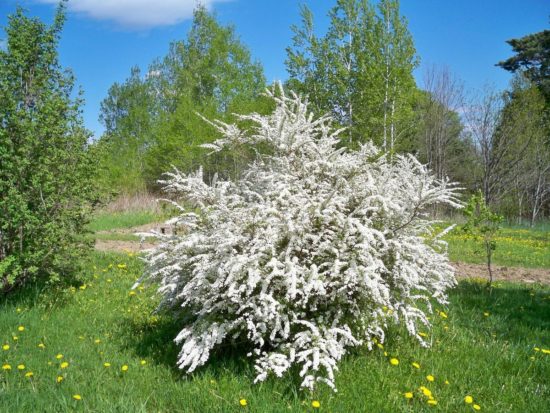
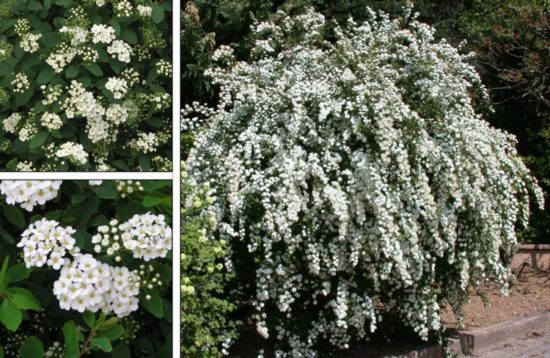
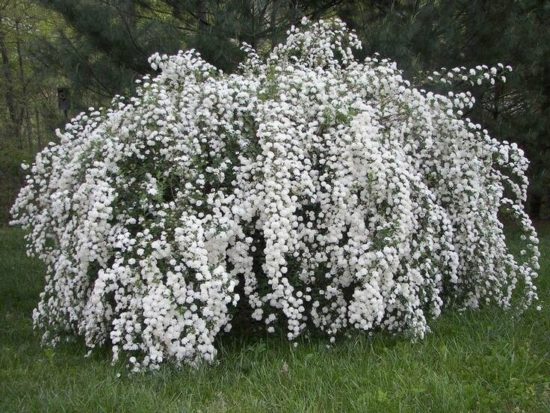
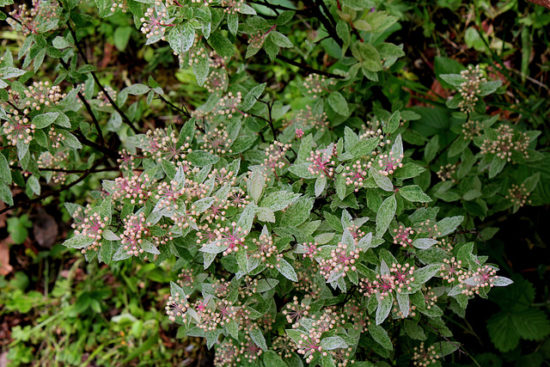
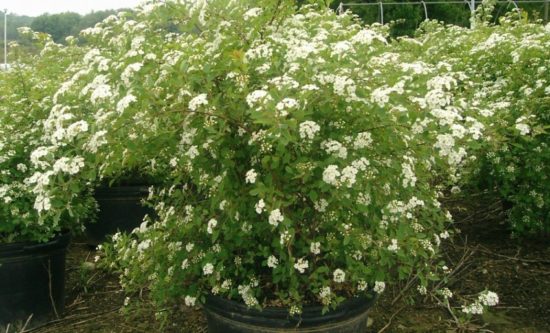
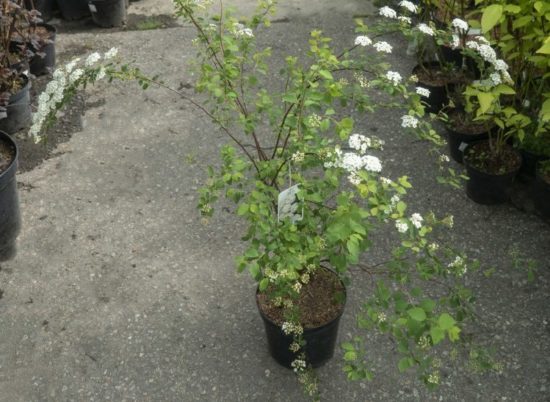
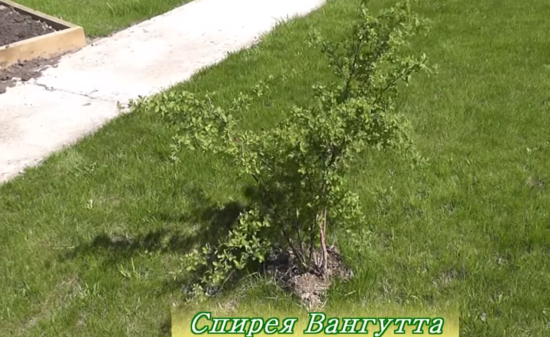
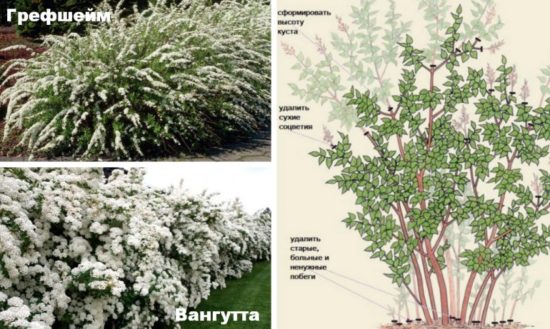
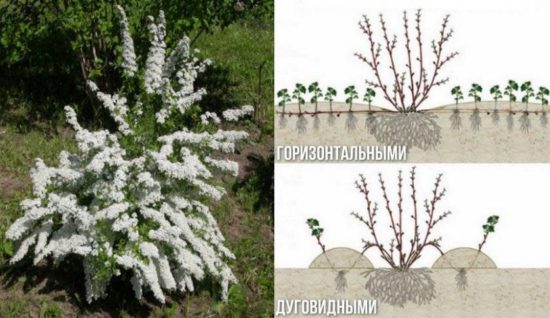
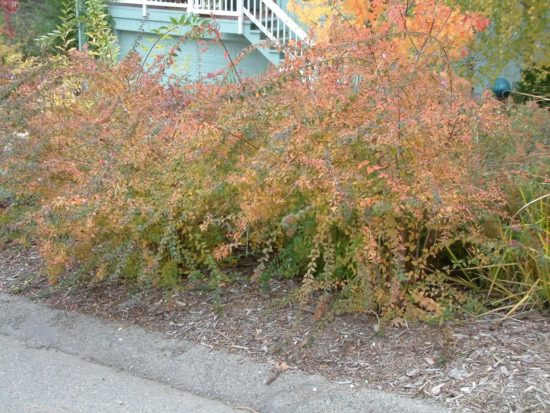
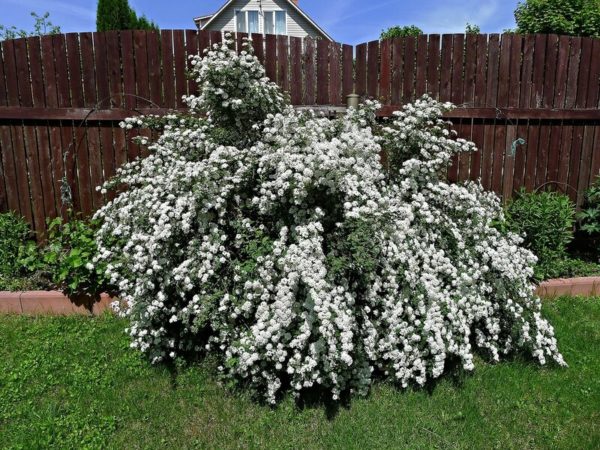
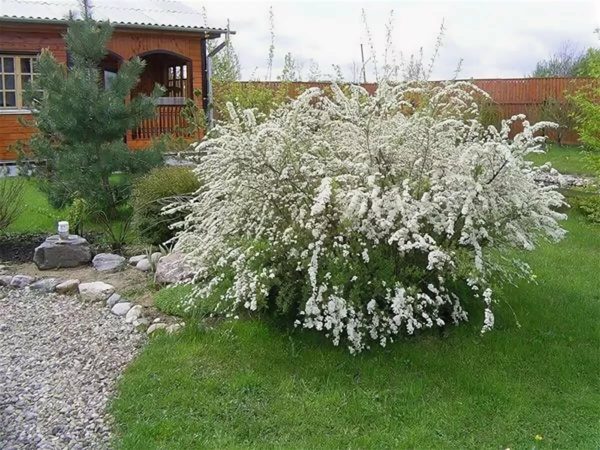
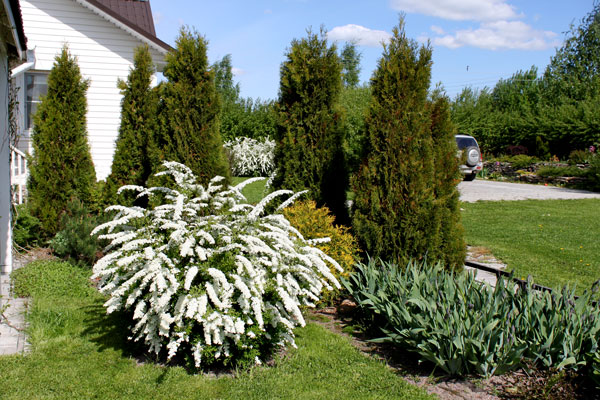
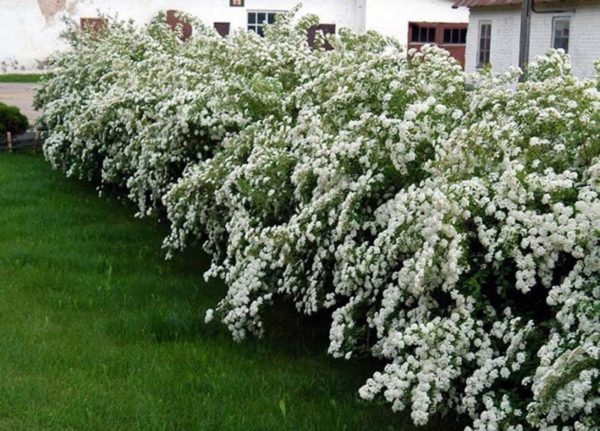
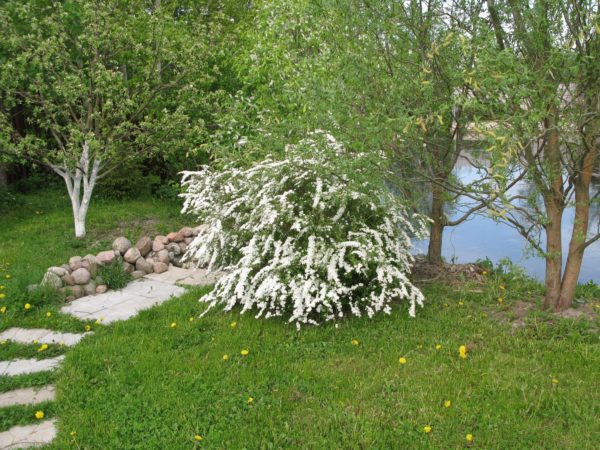
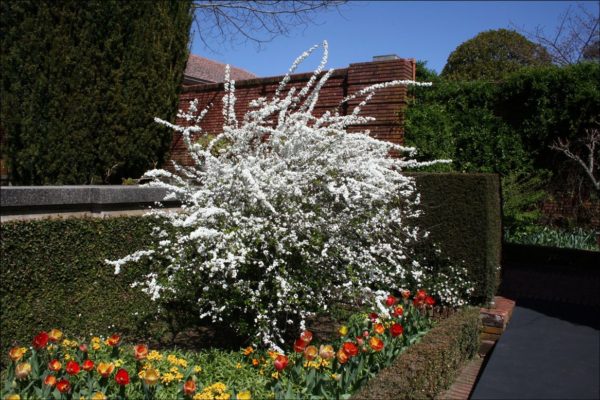

 CUCUMBERS NEVER GET SICK, I'VE BEEN USING ONLY THIS FOR 40 YEARS! I SHARE A SECRET WITH YOU, CUCUMBERS ARE LIKE THE PICTURE!
CUCUMBERS NEVER GET SICK, I'VE BEEN USING ONLY THIS FOR 40 YEARS! I SHARE A SECRET WITH YOU, CUCUMBERS ARE LIKE THE PICTURE! You can dig a bucket of potatoes from each bush. Do you think these are fairy tales? Watch the video
You can dig a bucket of potatoes from each bush. Do you think these are fairy tales? Watch the video
 How our fellow gardeners work in Korea. There is a lot to learn and just fun to watch.
How our fellow gardeners work in Korea. There is a lot to learn and just fun to watch. Eye trainer. The author claims that with daily viewing, vision is restored.They don't charge money for views.
Eye trainer. The author claims that with daily viewing, vision is restored.They don't charge money for views. A 3-ingredient cake recipe in 30 minutes is better than Napoleon. Simple and very tasty.
A 3-ingredient cake recipe in 30 minutes is better than Napoleon. Simple and very tasty. Therapeutic exercises for cervical osteochondrosis. A complete set of exercises.
Therapeutic exercises for cervical osteochondrosis. A complete set of exercises. Which indoor plants match your zodiac sign?
Which indoor plants match your zodiac sign? What about them? Excursion to German dachas.
What about them? Excursion to German dachas.